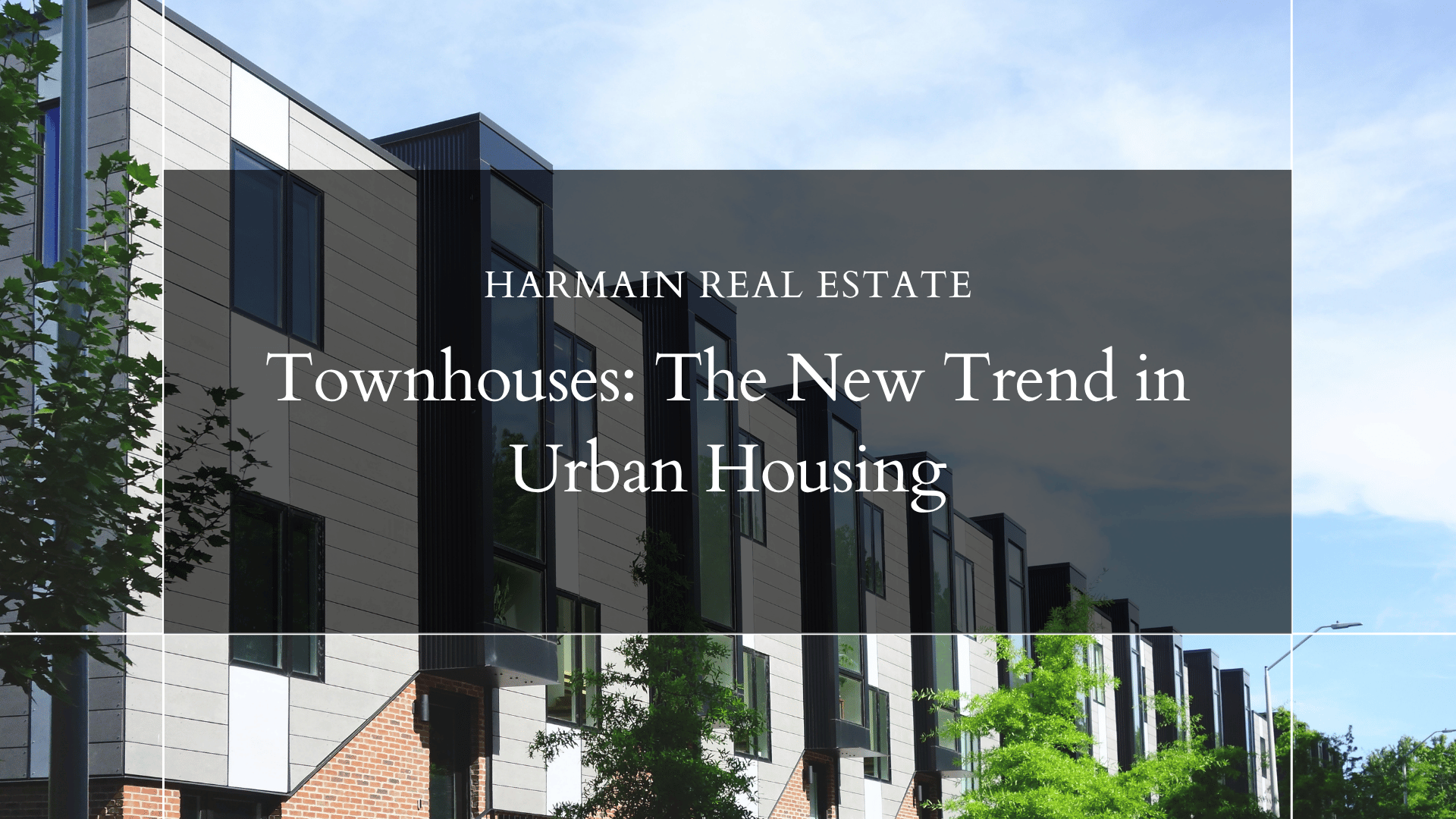In the ever-evolving tapestry of urban living, housing trends often reflect the rhythm of society itself—changing tastes, shifting priorities, and creative responses to the demands of modern city life. Among these emerging paradigms rises the humble townhouse, quietly redefining what it means to call a city home. Once overshadowed by sprawling suburban developments and towering high-rise apartments, townhouses are now claiming their place in the limelight, celebrated for their versatility, efficient use of space, and ability to bridge the gap between community and privacy.
From sleek, contemporary designs to charming brick facades steeped in history, townhouses are becoming the new architectural heartbeat of metropolitan landscapes. But what is fueling their ascent, and why are they resonating so profoundly with today’s urban dwellers? Let’s uncover the story of townhouses as the fresh face of urban housing.
Table of Contents
- Rise of the Urban Townhouse: Blending Style and Functionality
- Maximizing Space in Compact Environments: The Benefits of Vertical Living
- Design Features That Set Modern Townhouses Apart
- Planning Your Townhouse Investment: Key Factors to Consider
- Q&A
- Future Outlook
Rise of the Urban Townhouse: Blending Style and Functionality
Once considered a niche option for city living,urban townhouses are now redefining the way we think about modern housing. Rooted in practicality yet refined with contemporary aesthetics, townhouses effortlessly bridge style and functionality. Their compact architecture makes them ideal for maximizing space, while thoughtfully designed interiors ensure no compromise on elegance. These homes cater to the growing demand for private, yet communal living, appealing to a diverse array of homeowners—from young professionals to families seeking a balance between bustling city life and serene residential comforts.
What sets urban townhouses apart is their ability to adapt to evolving lifestyles. Features frequently enough include:
- Open-concept living areas that foster connectivity
- Energy-efficient designs promoting sustainability
- Rooftop terraces for relaxation or entertaining guests
- Space-saving innovations like built-in storage solutions
below is a speedy comparison highlighting these key aspects:
| Feature | Benefit |
|---|---|
| Open Layout | Improved social interaction |
| Green Appliances | Reduced utility costs |
| Rooftop Access | Private outdoor space |
| Smart Storage | Enhanced functionality |
Maximizing Space in Compact Environments: The Benefits of Vertical Living
In dense urban landscapes, where every square foot matters, embracing vertical solutions transforms compact living into a sophisticated art form. Townhouses are leading this shift, offering layers of functionality within stacked floors. High ceilings,mezzanine levels,and multi-use spaces create breathing room in a smaller footprint,while vertical living fosters a sense of flow between private and shared areas. This efficient design allows residents to enjoy the perks of traditional homes—like distinct zones for entertainment and relaxation—without sprawling outward.
- Optimized storage: Hidden storage compartments under stairs or within walls.
- Enhanced privacy: Separation of bedroom and communal spaces across levels.
- Comprehensive layouts: Rooftop gardens or terraces that maximize outdoor living.
| Feature | Benefit |
|---|---|
| Dual-purpose staircases | Combine storage with connectivity |
| Vertical gardens | Increase greenery without sacrificing space |
| Lofted bedrooms | Create room for workspaces below |
Design Features That Set Modern Townhouses Apart
Modern townhouses are redefining urban living with a mix of clever design choices and innovative features. Architects are focusing on optimizing space while maintaining aesthetic appeal. Open floor plans are now a standard, providing a seamless flow between rooms that enhances the feeling of spaciousness. Innovations such as smart home integration allow residents to control lighting, temperature, and security effortlessly through mobile apps or voice-enabled devices. Large windows and energy-efficient materials ensure that townhouses feel bright and eco-amiable, catering to households looking for sustainability alongside style.
Additionally, these houses are thoughtfully designed to maximize comfort without compromising functionality. Private outdoor spaces such as rooftop terraces or small lush patios enable homeowners to maintain a touch of greenery without the upkeep of a large garden. You’ll also find multi-purpose rooms,which can be adapted into home offices,gyms,or playrooms. Many developments include shared amenities, like fitness centers or community spaces, encouraging interaction without sacrificing privacy.Here’s a quick comparison of new design features versus traditional layouts:
| Feature | Modern Townhouses | traditional Homes |
|---|---|---|
| Open Floor Plans | Flexible and airy | Compartmentalized spaces |
| Smart Integration | Advanced technology | Limited automation |
| Outdoor Spaces | Compact but private | Large gardens |
Planning Your Townhouse Investment: Key Factors to Consider
Investing in a townhouse can offer a unique blend of urban convenience and low-maintenance living, but understanding the key factors is essential for making a smart decision. start by evaluating the location, as it greatly influences both the property’s value and rental demand. Look for proximity to amenities like schools,public transport,shopping centers,and parks. Areas with anticipated growth or urban renewal projects frequently enough hold higher investment potential. Additionally, research the neighborhood’s vibe—a thriving community or a quiet suburb can cater to different preferences based on your goals.
- Property Features: check the layout, shared facilities, and overall functionality.
- Market Trends: Study recent sales and rental prices to gauge profitability.
- Potential Expenses: Factor in HOA fees, maintenance costs, and renovations.
Another vital aspect is assessing the townhouse growth itself. Consider whether the project is part of a larger complex or an individual property and examine its financial standing if an HOA is involved. Below is a quick comparison of two common townhouse investment scenarios:
| Scenario | Benefits | Challenges |
|---|---|---|
| Part of a Complex | Shared amenities,managed landscaping | Higher HOA fees |
| Standalone Townhouse | More privacy,fewer restrictions | Higher maintenance responsibility |
Q&A
Townhouses: The New Trend in Urban Housing
Q1: What makes townhouses stand out in urban housing markets?
Townhouses strike a unique balance between the charm of single-family homes and the convenience of apartments. Their multi-level designs often include private entrances, small outdoor spaces, and greater privacy—elements that are highly sought after in bustling city environments. Unlike traditional housing options,townhouses cater to modern urban dwellers who crave both functional layouts and a touch of individuality.
Q2: Why are townhouses becoming a popular choice for city living?
Rising real estate costs have made spacious single-family homes a distant dream for many urban residents. Townhouses provide a cost-effective alternative without sacrificing style, space, or convenience. Their vertical layouts maximize square footage, making them ideal for young professionals, small families, and retirees alike. The growing preference for walkable neighborhoods and centralized locations has further fueled their popularity.
Q3: are townhouses a sustainable housing solution?
Yes, townhouses are frequently enough considered eco-friendly compared to sprawling suburban developments. By utilizing smaller plots of land and shared walls between units, townhouses reduce energy consumption and minimize urban sprawl. additionally, many modern developments incorporate energy-efficient materials and sustainable building practices, making them an appealing choice for environmentally conscious homeowners.
Q4: How do townhouses differ from condominiums and apartments?
while townhouses share some similarities with condos and apartments—like communal maintenance or proximity to neighbors—their defining feature is ownership. Owners of townhouses typically own both the interior of the home and the land it sits on, unlike condo owners who mostly own the interior space. Additionally, townhouses often have fewer shared amenities than apartments, offering a more self-reliant living experience.
Q5: What challenges come with owning a townhouse in the city?
While townhouses offer remarkable benefits,they’re not without drawbacks. Urban townhouses often come at a premium price due to desirable locations. Maintenance responsibilities for outdoor spaces also fall on the owner, rather than a central management service. Lastly, parking can be limited in crowded city cores—a common concern for potential buyers. Despite these challenges, many feel the perks outweigh the obstacles.
Future Outlook
As the urban landscape continues to evolve, townhouses stand as a testament to the changing rhythms of city living—where modernity meets community, and individuality blends seamlessly with shared spaces. Neither purely traditional nor overtly futuristic, townhouses inhabit a middle ground that speaks to both practicality and aspiration. Whether you’re envisioning life within their walls or simply admiring their rise in popularity, these compact yet sophisticated homes are redefining the essence of urban housing. As cities grow taller and wider, one thing is clear: townhouses aren’t just a trend—they’re a thoughtful response to how we live, connect, and thrive in the ever-shifting dynamics of the urban world.





Join The Discussion